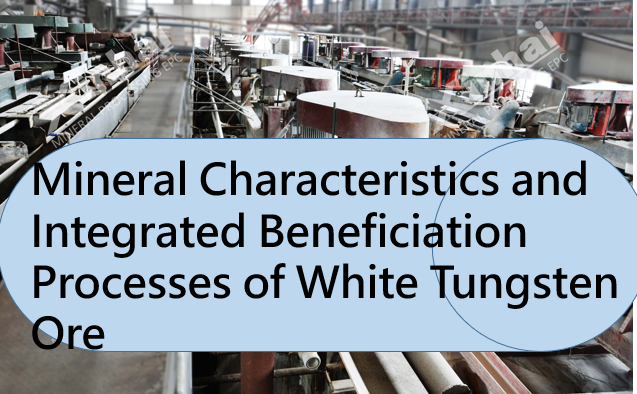Mineral Characteristics and Integrated Beneficiation Processes of White Tungsten Ore
2025-10-22 Xinhai (167)
2025-10-22 Xinhai (167)
If you have any questions, please contact us through the following ways, we will give you more and better assistance!

White tungsten ore constitutes a tungsten ore raw material of significant economic value. Belonging to the tetragonal crystal system, it commonly appears grey, white, or brownish-yellow. It is frequently encountered in skarn, quartz vein, and kyanite-type tungsten deposits, whilst also occurring within intrusive-related deposits and orogenic gold deposits.
Its ore deposits exhibit complex mineral compositions, frequently accompanied by multiple sulphide minerals (such as pyrite, arsenopyrite, molybdenite, galena, sphalerite, and silver-bearing minerals), rare earth elements, and silicate gangue minerals like quartz, biotite, pyroxene, and garnet, alongside calcium-bearing gangue minerals such as dolomite, apatite, calcite, and fluorite.
Given the diverse mineral composition and complex distribution patterns of wolframite, its beneficiation typically requires integrating multiple processes to achieve optimal results. Flotation remains the most widely applied method, while gravity separation, magnetic separation, and chemical beneficiation frequently serve as crucial complementary techniques.
1. Gravity and Magnetic Separation Processes
Gravity Separation: This process exploits density differences between mineral particles, utilising gravitational and fluid dynamic forces for separation. Specific methods include jigging, shaking table separation, and heavy media separation. For pyrotite with coarse grain size distribution, satisfactory results can be achieved using gravity separation alone.
Magnetic Separation: This process exploits differences in mineral magnetism for separation, primarily used to remove magnetic minerals associated with wolframite, such as wolframite, magnetite, and pyrrhotite.
2. Flotation Processes
Flotation is a key technology utilising differences in mineral surface hydrophobicity, achieved through the addition of specific reagents. It serves as the core method for recovering wolframite.

Ambient-temperature flotation: As an economical and efficient process, it has become the mainstream method for treating fine-grained wolframite.
Pre-flotation process: Due to its frequent association with sulphide minerals, wolframite flotation typically follows the ‘sulphides first, oxygenates later’ principle. This involves first using collectors such as xanthates and black medicine to float the sulphide minerals, followed by concentrated flotation of the wolframite.
White tungsten ore exhibits brittleness and fine grain size distribution, making it prone to over-grinding during milling and consequently reducing gravity separation efficiency. Therefore, in modern mineral processing workflows, gravity separation is frequently employed as a pre-treatment (tailings rejection) operation. This discards substantial quantities of low-grade tailings, creating favourable conditions for subsequent flotation operations and forming an efficient ‘gravity separation-flotation’ combined process. This multi-process combination strategy represents the optimal approach tailored to the specific characteristics of white tungsten ore resources.